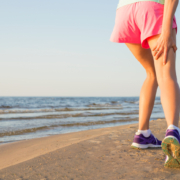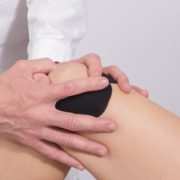Why Your Hamstring Isn’t Healing – 3 Signs It’s Something Else
Hamstring Pain is common – especially in active adults over 40.
But what’s less commonly talked about is how often a hamstring injury is misdiagnosed. If you’ve been stretching, foam rolling, and rehabbing your “hamstring strain” for weeks or months with little to no improvement – there’s a good chance your pain isn’t coming from your hamstring at all.
That’s because certain types of back problems can mimic hamstring pain almost perfectly. And if you don’t recognize the signs, you may end up chasing the wrong problem for far too long.
So how can you tell when your hamstring isn’t healing because it’s not really your hamstring?
Let’s take a look at what a true hamstring strain typically looks like – and then go over three clear signs that something else is actually going on.
What a true hamstring injury looks like:
A hamstring strain usually happens suddenly – often during an explosive movement like sprinting or lunging. You’ll feel a sharp pain in the back of your thigh, and possibly notice swelling, bruising, or tenderness. In the early stages, walking or bending your knee might be difficult. But with the right combination of rest, movement, and strengthening – most hamstring injuries heal well and don’t linger – especially when properly diagnosed and rehabbed.
If your pain doesn’t follow that pattern – or seems to be sticking around far longer than expected – there’s a good chance your spine is actually to blame.
Here are three key signs your “hamstring strain” might be something else entirely:
1. The pain never really goes away
A true muscle injury will hurt when it’s injured – but it heals. If your pain feels dull, achy, and persistent – especially after long periods of sitting or standing still – that’s a red flag.
This type of pain often stems from nerve irritation in the lower back, not muscle damage in your leg. It’s common for certain spinal problems to refer pain down the back of the thigh, which is why this gets misdiagnosed so often. But unlike a muscle strain, nerve-related pain doesn’t improve with time or basic rehab – and may even get worse with certain types of movement or exercise.
2. You notice tingling, numbness, or odd sensations
Muscles don’t cause tingling. Nerves do. So if your hamstring injury is accompanied by numbness, tingling, or an odd “buzzing” feeling in your butt or leg – it’s almost certainly a nerve issue. The sciatic nerve, which originates in your lower spine, travels right through the area where most people feel hamstring tightness. When that nerve gets irritated, it can create sensations that feel like they are coming from your hamstring – but aren’t.
If you’re experiencing these kinds of nerve symptoms – it’s a strong indicator that your spine (not your hamstring) is the real source of the problem – and it needs to be addressed.
3. Your pain travels below your knee
This one’s especially important. Your hamstrings attach just above and behind the knee – so any pain you feel below your knee can’t be coming from your hamstring.
If your discomfort travels down your calf or even into your heel, the likely culprit is your spine. Research shows that as much as 40% of lower leg pain originates from the lower back – even when there’s no actual back pain. So it’s very possible to have a perfectly healthy hamstring – but still feel pain there due to a nerve referral from your spine.
What to do next
If any of these signs sound familiar – don’t keep treating your hamstring like a muscle strain – it won’t help – and could even worsen your problem. Plus, the longer you focus on the wrong issue, the longer it will take to get better.
Instead, seek out a physical therapy specialist who understands how to properly screen and assess your spine. They’ll be able to figure out if your lingering hamstring pain is related to a problem in your lower back. And once you identify the true root of your pain – you can finally get the treatment you need – and get back to doing the activities you love.










